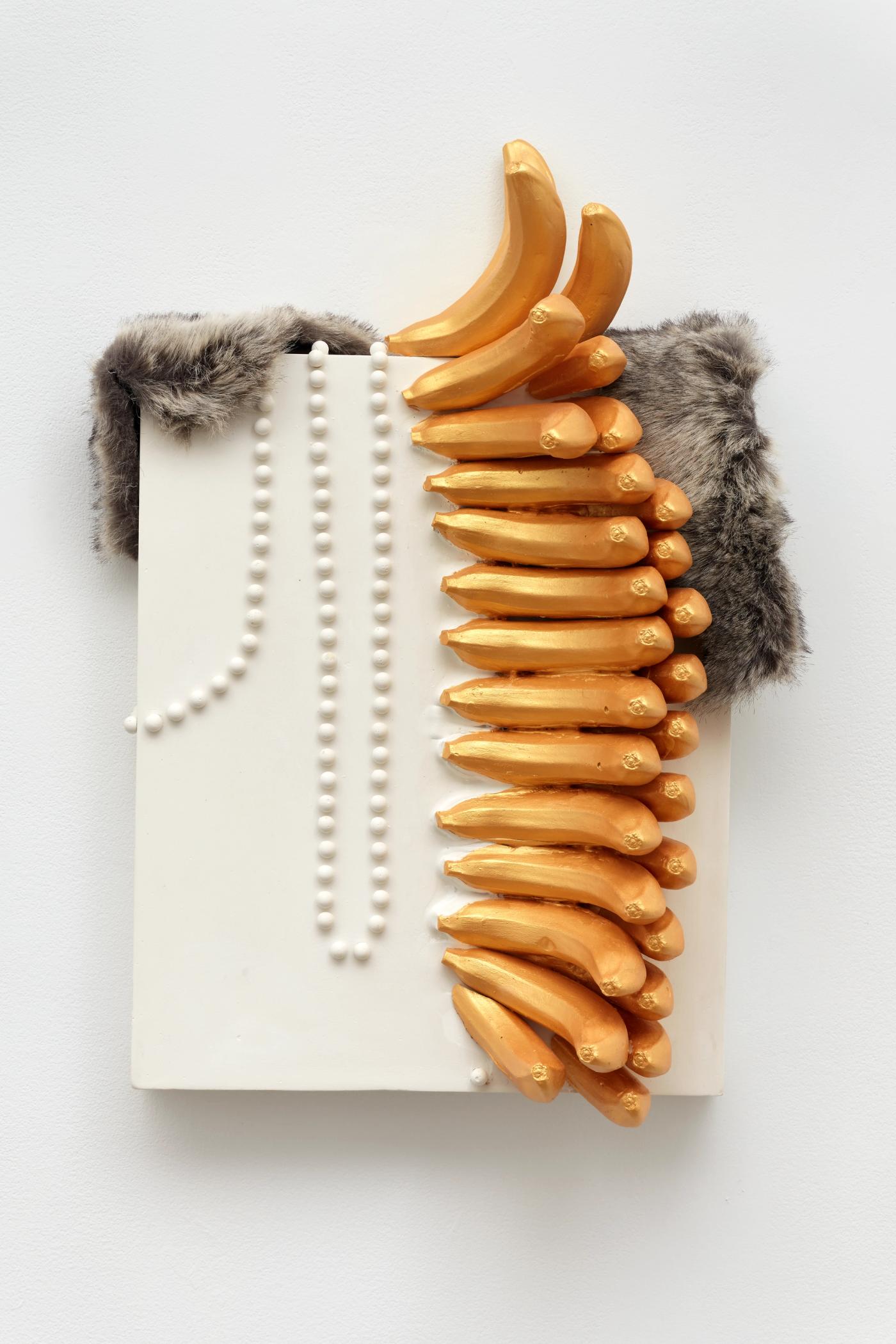
Presented by 56 HENRY, LaKela Brown’s solo exhibition A Harvest assembles recent works that examine the relationships between material culture, historical inheritance, and the lived realities in our (Black) communities. Brown approaches casting as a process of transformation, in which familiar objects become sculptural propositions that question how value, labor, and care are distributed across society. The works shift between symbolic and literal registers, insisting that materials themselves can carry the weight of history and reveal the tensions embedded in contemporary life. Through this methodology, Brown cultivates a visual language that addresses both the endurance of cultural knowledge and the fragility of the systems meant to sustain life.
This language becomes particularly charged when the stakes of Brown’s material language become fully apparent when she turns to objects entangled with systems of profit, regulation, and cultural judgment. Cast dollar coins are calibrated to the amount of money that would have allowed a 12-year-old Maryland boy to receive critical dental treatment, a failure of access that ultimately led to his death. The coins, stripped of circulation and transformed into sculptural elements, expose the violence of a system in which survival hinges on the smallest increments of capital. Tobacco and marijuana leaves reference industries and criminalized economies that have shaped Black experience in contradictory ways, producing both livelihood and harm. Pig heads evoke cycles of extraction and policing, while cast apples invoke the biblical figure of Eve and the ways her story has long served to rationalize the discipline of racialized and gendered bodies. Together, these materials destabilize their conventional associations and reveal the structural narratives they uphold.
The title A Harvest points toward a collective reckoning with what has been produced by these histories and what remains necessary to sustain the future. Brown frames material transformation as an act of accountability and memory. The works neither romanticize nor distance themselves from the conditions of societal collapse; instead, they confront the precariousness of the present while affirming resilience rooted in community, adaptation, and creativity. A Harvest suggests that what is gathered in this moment consists not only of cultural inheritance and hard-won knowledge, but also the consequences of long-standing inequities. Through sculptural inquiry, Brown offers viewers a space to engage both the burdens and the possibilities that emerge when the past is reexamined and reworked into forms that demand recognition.
– Jova Lynne, 2025